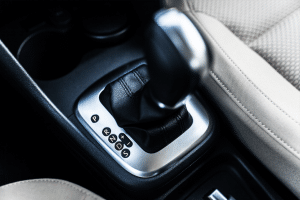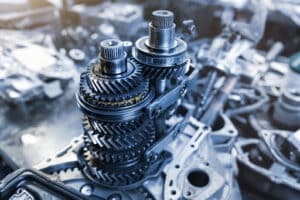When it comes to choosing a car, understanding the different types of car transmission is key to making the right decision. From manual to automatic, continuously variable transmissions (CVT), and dual-clutch systems, each type offers unique benefits that cater to different driving preferences and conditions.
But which car transmission is the best for you? Whether you’re after smooth shifts, fuel efficiency, or a sportier driving experience, this guide breaks down the pros and cons of each transmission type, helping you make an informed choice for your next vehicle. Read on to find the ideal transmission to suit your needs and driving style!
What are the Different Types of Car Transmission Options?
Understanding the different transmission options available can help you choose the best fit for your driving needs. From standard transmissions like manual gear setups that offer a sense of control to modern transmissions such as advanced automatics with a wide range of speeds, each kind of transmission brings unique benefits to enhance your driving experience.
Manual transmission

Increasingly rare in Canada, the manual transmission is when the driver changes gears himself. Using a simple lever and a clutch pedal (a “clutch” for short), the driver has direct control over this conventional transmission. Much more complex in its design than an automatic transmission, it appeals more to driving enthusiasts. Even if in recent years the automatic transmission has become faster than the manual transmission, the latter remains more engaging in terms of driving sensations.
Some models such as the Honda Civic Si, the Subaru WRX STi or the Ford Focus ST were in the past or still are exclusively equipped with the manual gearbox. In addition, for specific sports car models, the sales gap between the manual and automatic gearbox is very close. This is the case, for example, with the Volkswagen Golf GTI or the Subaru WRX.
Advantages of Manual Transmissions:
- Provides direct and precise control over shifting.
- Delivers a more engaging driving experience.
- Offers better fuel efficiency compared to some automatic counterparts.
- Typically has lower maintenance costs due to simpler mechanics.
Disadvantages of Manual Transmissions:
- Requires constant clutch control and gear shifts, which can be challenging in heavy traffic.
- May not offer the smooth driving experience found in modern automatics.
- Can be intimidating for beginner drivers due to the learning curve.
For those who still want to have total control, there are still sports cars and some entry-level cars that offer it.
“If you have to drive to work in two hours of rush hour every day, this is probably not the one for you! But if you are a driving enthusiast and are looking for a thrill behind the wheel of your car, this might be for you!”
Automatic transmission

Widespread everywhere, it is the gearbox of choice for the majority of car buyers. Many people no longer even ask themselves the question. From now on, this transmission is more economical, faster (gear changes), quieter, more pleasant on a daily basis, and the most common.
Of all new vehicles sold in Canada in 2015, 96.4% were equipped with an automatic transmission . But, to get to these figures mentioned above, this type of transmission had a winding journey. According to IHS Automotive, the number of models offering such a transmission in the 1980s accounted for 65% of the market.
Today, on the Canadian market, we are talking about 91%. It must also be said that you could, not so long ago, save a good $2,000 by opting for the same vehicle, but with the manual transmission. This era is unfortunately or fortunately over.
Advantages of Automatic Transmissions:
- Provides a relaxed driving experience.
- Easy to drive, especially in heavy traffic.
- Offers a wide range of options, from traditional to advanced dual-clutch automatics.
Disadvantages of Automatic Transmissions:
- Can be less fuel-efficient compared to manuals, though modern automatics have improved significantly.
- Higher initial cost and potentially higher maintenance expenses.
- Less driver engagement and control over gear shifts.
Dual clutch transmission
Once reserved for sports or high-end cars, the dual clutch transmission has two gearboxes joined by clutches. A traditional automatic transmission has a single clutch to change gears while the dual-clutch gearbox has two as the name suggests.
The DCT transmission is therefore divided into two: even gears (2, 4 and 6) and odd gears (1, 3 and 5). Initially, the first half-gearbox will be in first gear while the second half-gearbox will be in second gear. They are therefore generally faster than an automatic gearbox which is equipped with a single clutch. On the other hand, maintenance is expensive and the risk of breakdown is higher. For more details, read this.
Advantages of DCTs:
- Provides rapid shifts for high-performance driving.
- Offers improved fuel efficiency compared to some automatic transmissions.
- Can be operated in manual mode, allowing for greater driver engagement.
Disadvantages of DCTs:
- May feel jerky at low speeds or during stop-and-go driving.
- Generally more expensive than traditional automatic or manual transmissions.
- Higher maintenance costs due to complex mechanics.
At Volkswagen it is called DSG, at Audi it is called S-Tronic, at Porsche it is called PDK, at Ford it is called PowerShift, at Mitsubishi it is called TC-SST. Not all manufacturers offer such technology, which is very expensive to develop.
Continuously Variable Transmission (CVT)
Continuously variable transmission is known to be used on snowmobiles, ATVs and even some tractors. Unlike a manual transmission or a standard automatic transmission, the CVT (Continuously Variable Transmission) does not have any gears to select the right ratio.
As an example, think of the gear system on a bicycle. On the engine equipped with a continuously variable transmission, these are two rotating elements linked by a chain that transmits power to the wheels. This system allows for a sort of unlimited number of ratios.
Advantages of CVTs:
- Provides excellent fuel economy due to infinite gear ratios.
- Offers a smooth and quiet driving experience.
- Ideal for city driving and vehicles with lower horsepower needs.
Disadvantages of CVTs:
- Lacks the gear feel that some drivers prefer.
- Not ideal for high-performance applications or aggressive driving.
- May have higher maintenance costs in the long term.
Subaru calls it Lineartronic, Volkswagen and Audi call it Multitronic, Nissan call it Xtronic , Mercedes-Benz call it Autotronic, Hyundai call it IVT. Some manufacturers simply do not use CVT.
Semi-automatic (with manual mode)
This last type of automatic transmission, also called a robotic gearbox, is a bit of a mix. You have to understand that both a dual-clutch transmission and a continuously variable transmission can be equipped with the semi-automatic function. Long story short, if you like to shift manually, but sometimes want to avoid the hassle of using a clutch pedal, this is the transmission for you. It truly combines both worlds.
A simple movement of the gear lever to the right or left (depending on the car model) is enough to put the transmission in semi-automatic mode. You can either change gears with the gear knob by moving it down or up, represented by a “+” and a “-“.
Advantages of Semi-Automatic Transmissions:
- Offers both automatic and manual shifting options.
- Provides a versatile driving experience.
- Allows drivers to adjust driving style based on conditions.
Disadvantages of Semi-Automatic Transmissions:
- Typically more expensive than basic automatic or manual transmissions.
- Higher maintenance costs due to complex technology.
- Not ideal for novice drivers who may find the controls confusing.
How to Find the Best Car Transmission for Your Driving Style
Choosing the best car transmission for your driving style can improve fuel consumption, control, and comfort. With diverse types of transmissions—from stick shifts with gear sets to advanced automatics—factors like engine speed, gear selector preference, and driving needs shape the ideal choice, ensuring a smooth and personalized ride:
- For Fuel Efficiency: Continuously Variable Transmission (CVT) is an ideal choice, as it offers excellent fuel economy with its infinite gear ratios that adapt to the efficient rev range.
- For Performance and Engagement: Manual transmissions or Dual-Clutch Transmissions (DCT) are popular among drivers who enjoy a more engaging experience, providing precise control and rapid shifts.
- For Convenience and Ease of Use: Automatic transmissions and Automated Manual Transmissions (AMTs) are perfect for relaxed driving, especially in urban settings where frequent stops are required.
- For Versatile Driving Needs: Semi-automatic transmissions are excellent if you like the flexibility of switching between manual and automatic modes.
Ensure Your Vehicle is Safe With a Pre-Purchase Car Inspection
At CarInspect, we know buying a car is a big decision which is why we’re here to help with our mobile pre-purchase inspections. Our expert team conducts comprehensive assessments that include detailed checks on key areas like transmissions, ensuring your potential vehicle is in good shape. We come to you, to make the entire process simple and convenient. With CarInspect, you get the confidence and knowledge to make a well-informed choice without any hassle. Let us support your next vehicle purchase!










